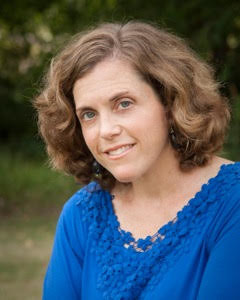Rebecca Fremo
Associate Professor in English
(Edgar M. Carlson Award Winner)
What classes do you regularly teach?
FTS: Why Multi Matters or Stories, Selves and Communities
ENG 212: Academic Writing
ENG 256: Writing Creative Nonfiction
ENG 247: Teaching Writing
ENG 237: Adolescent Literature and Literacy
What’s the best advice about teaching you’ve ever received?
“Try to help your students re-arrange the furniture in their heads.” I take this to really mean try to help them first acknowledge and understand what’s already in their heads (reflecting on their experiences), and then urge them to rethink, question, and complicate those experiences. It’s about moving from a place of comfort to a place of challenge, I think.
Tell us about your favorite topic or course to teach.
I really love teaching all of my classes, but for radically different reasons. I adore teaching my FTS, Why Multi Matters. It’s a rare privilege to be in a room with students who have grown up speaking two or three languages at home, and who are now willing to trust me and one another as they develop their writing skills. And I love Writing Creative Nonfiction because it’s a chance to take students back through their own memories, rethinking experiences with family members and friends, or reimagining the most important moments of their lives, but this time in a way that creates art. And I love teaching Academic Writing because it brings students from different disciplines together into the same room. It’s exciting to listen to them talk about what counts as evidence, what counts as argument, what counts as “stylistically appropriate” across disciplinary boundaries. Students are often shocked and amazed by what their comrades actually go through as writers on this campus.
 Describe a favorite in-class activity or assignment.
Describe a favorite in-class activity or assignment.
I stole this one—all the best activities are stolen, I think—from Bill Roorbach’s wonderful textbook Writing Life Stories. I pass out markers and big, giant sticky white paper to my Writing Creative Nonfiction students. Then, they “map” (literally) their childhood neighborhoods, using that mapping experience in order to tap into the characters and events that have shaped who they’ve become. These maps often morph into lovely essays by the end of the semester.
What teaching and learning techniques work best for you?
Wow. That’s a really hard question. My own style as a learner has changed over the years. Once upon a time I was mesmerized by a fabulous lecture; now I have to participate actively in writing and discussion in order to engage. I respond best to learning experiences where something important is at stake: I have to be really emotionally invested to learn something new. I suppose that’s why no matter how many times people try to show me how to use MOODLE, I kind of glaze over. I know I could “deliver” all of those materials equally well using handouts or dropbox or even by putting a manila envelope on my office door and having students drop off/ pick up materials. So I’m not truly invested. Does that make sense? As a teacher, I tend to engage students actively, using lots of in class writing and discussion. But I’m always sensitive to the fact that not all students learn best this way, and one of my goals this year is to work on “delivery” by becoming more comfortable with digital texts and being more willing to offer mini-lectures when needed.
Tell us something that you’ve learned about yourself from teaching.
I think that my strengths are related to my ability to listen carefully (or read carefully) to what my students say or write, and then find ways to both affirm them, yet push them farther. I think that means I have a pretty good capacity for empathy, but also enough candor and determination to challenge my students.
Three words that best describe your teaching style.
Lively, personal, engaging, humorous.
What is your teaching philosophy in 8 words or fewer?
Geez, Kendall Center! Why don’t you just ask me if there’s life after death? Here goes: Empathize, encourage, and challenge. Stretch and be stretched.
 Tell us about a teaching disaster (or embarrassment) you’ve had.
Tell us about a teaching disaster (or embarrassment) you’ve had.
In general, I think that I tend to be just a little bit paranoid in class, especially when I teach a room that’s full (30 students) as opposed to my normal 15-16 seat writing courses. Once I was teaching Adolescent Literature and I was absolutely certain that one of my students was mocking me whenever my back was turned, not taking the course seriously, skipping the reading assignments, etc. I finally got him to come and see me during office hours, and I was a nervous wreck. I then learned that not only was he not mocking me, but he felt as though I was constantly picking on him—and he had a real hang-up about reading and writing going back to middle school. Once I was able to re-see his actions and attitude as an expression of fear and not aggression toward me, I was much better able to both meet his needs and to relax in class.
What is something your students would be surprised to learn about you?
That I actually have a tremendous need for “alone time” and that I actually get very, very nervous about teaching every fall.
What are you currently reading for pleasure?
Anne Lamott’s Bird by Bird
Who would you like to fill out this survey next?
Sun Hee Lee, Jill Locke, Tom LoFaro, Rick Orpen
The How I Teach series asks Gustavus faculty members to share their thoughts on assignments, course activities, and teaching in general. Most Tuesdays a new Gustavus faculty member will be featured. If you have someone you want to see featured, let us know. Also, we’d love it if you’d answer the questions yourself and send those along with a few pictures to howiteach@gustavus.edu.
